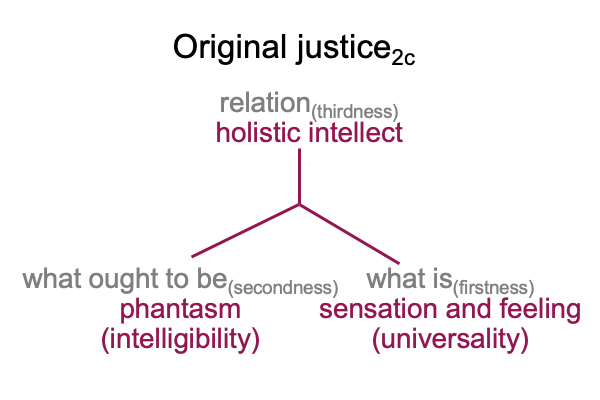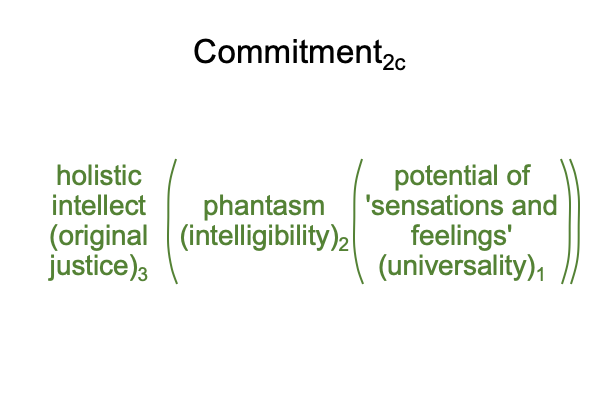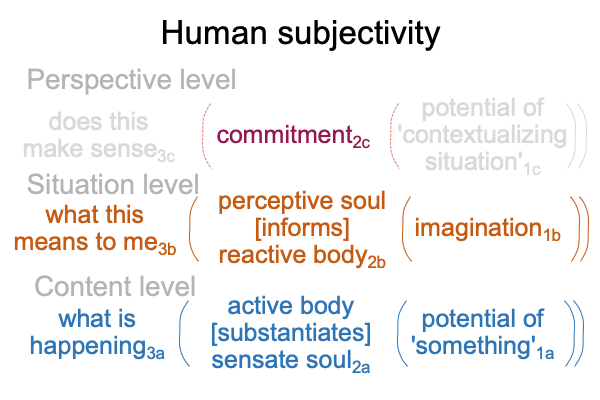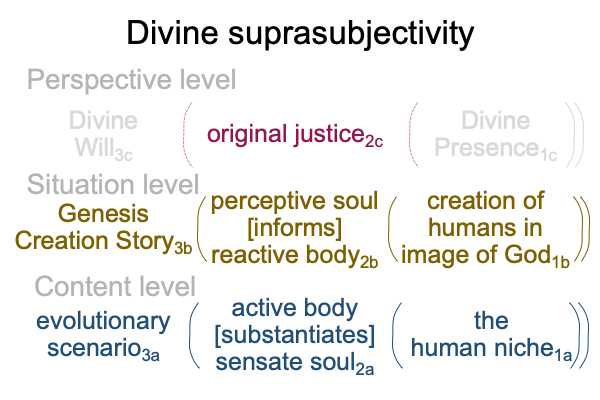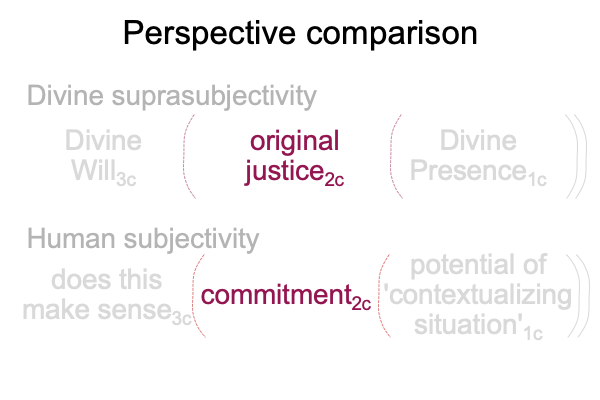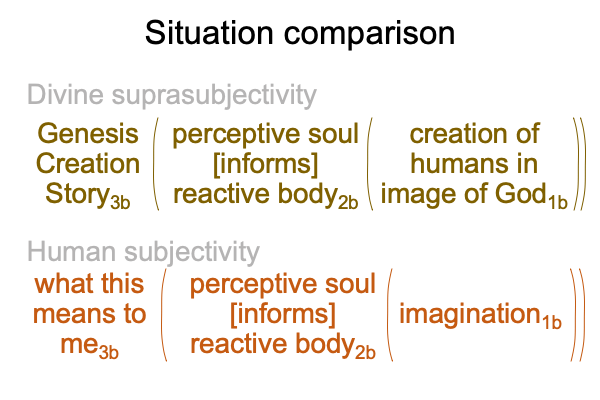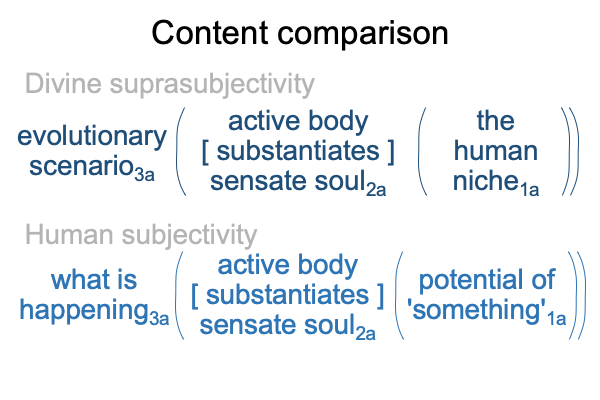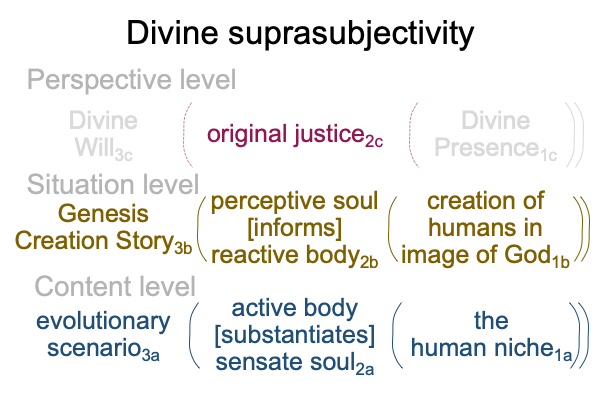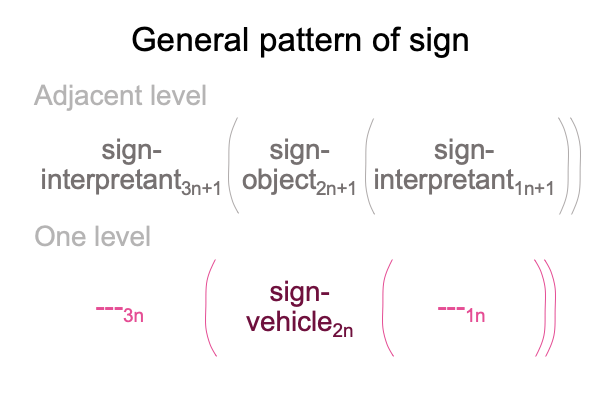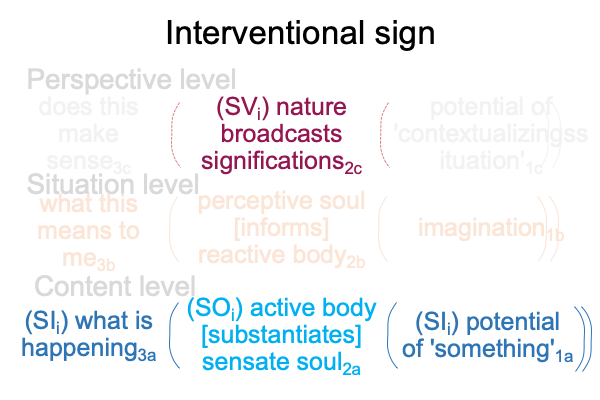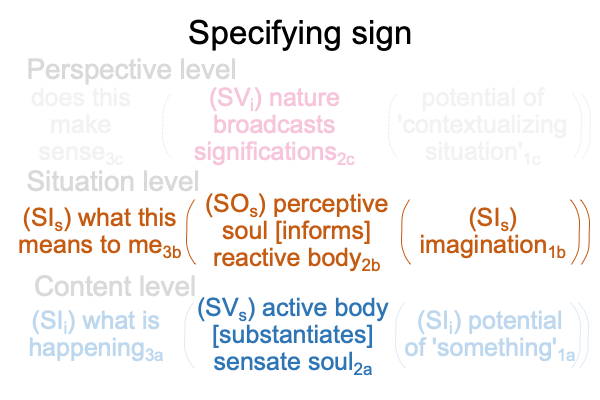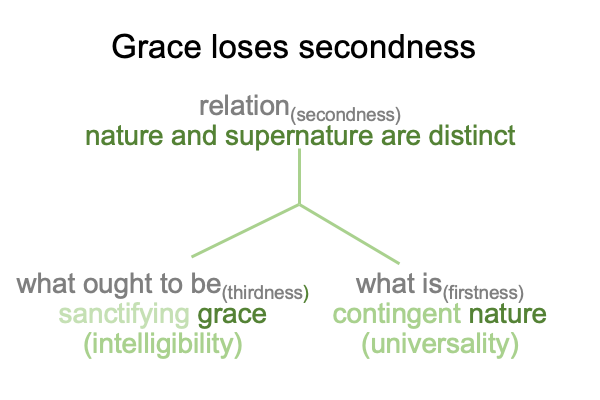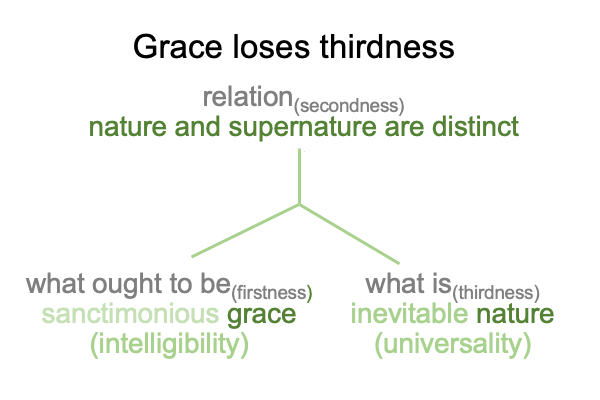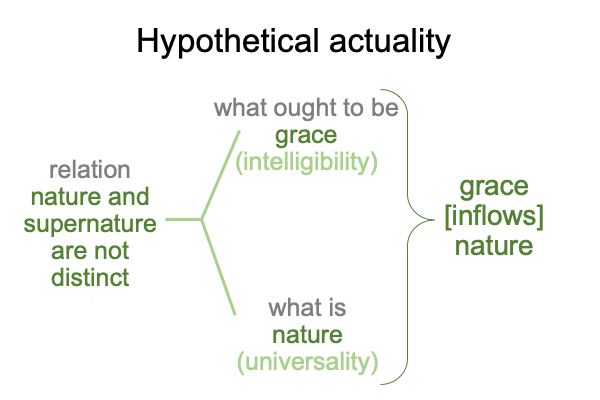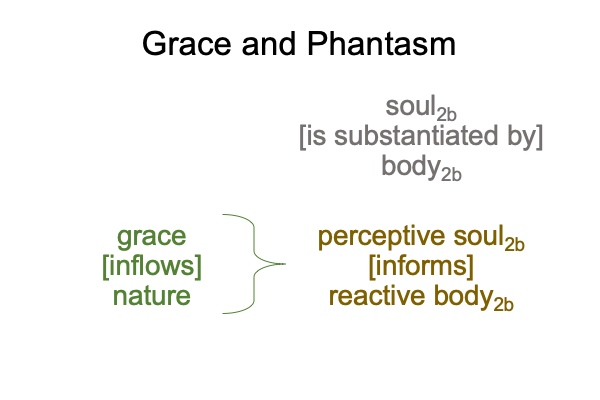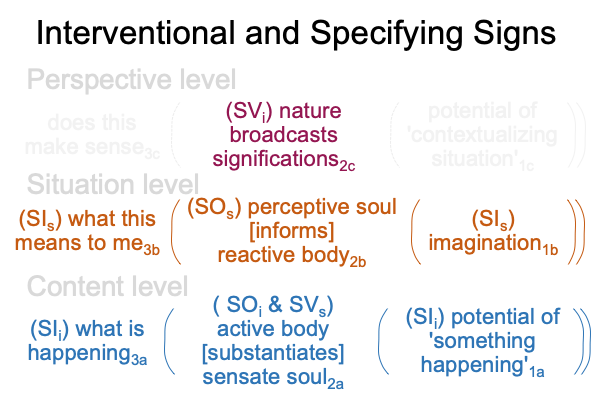Looking at Daniel Houck’s Book (2020) “Aquinas, Original Sin and the Challenge of Evolution” (Part 6 of 23)
0059 Okay, back to the is-it-still-living turtle. It has yet to start um… becoming less fresh.
It is on the table, but no one in our current Lebenswelt knows what to do with it.
Back in the Lebenswelt that we evolved in, I suspect that we would just eat it without delay. Or, we would take it back to camp and throw it in the fire. Then, everyone would eat it.
Sharing food is one of the hominin’s adaptations.
0060 At this juncture, two interscopes are presented. Human subjectivity ends the previous section. Divine suprasubjectivity starts this section. Or, is it the other way around?
Here is a picture of what I know so far, as it applies to prelapsarian Adam and the images of God in the Creation Story,associating to the Lebenswelt that we evolved in.
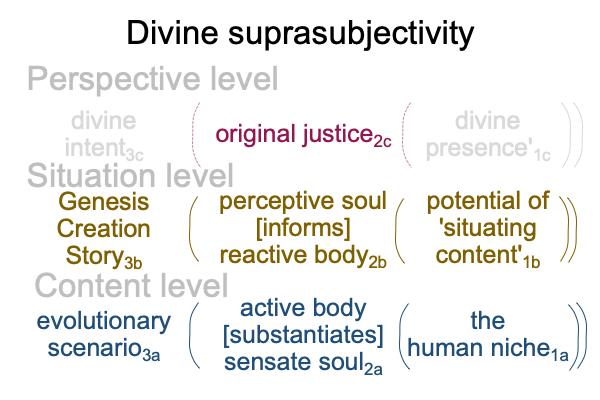
0061 When I open the scroll of Genesis, I first encounter the Creation Story. The Creation Story ends at Genesis 2.3. Then, I read into the story of the Garden of Eden, starting at Genesis 2.4. Adam and Eve are specially created in the Garden of Eden. Should I suppose they must be the Creation Story people who come forth as images of God?
Saint Augustine presumes this to be the case. Adam and Eve are the first humans. That means that all humans are direct descendants of this original pair. Augustine’s construction of original sin currently comes under fire by evolutionary biologists, because there is no evidence for a genetic bottleneck of the magnitude expected from a species arising from two individuals, male and female.
Of course, biological research cannot hold a candle to Augustine’s literary flame. So, they rely on the oxygen-deprivation of scientific respectability.
Augustine is the first theologian to propose a mechanism for the transmission of original sin. Technically speaking, that mechanism is not plausible, given modern science. Surely, Augustine’s words capture the imagination. But, in the era of science… gasp… they cannot breathe.
0062 That is not all. Despite the asphyxiation of scientific discourse, I have my own petty criticisms. Here is one. The Creation Story says that God created them, male and female. Adam and Eve are not “they”.
The Story of the Garden of Eden cleverly starts with “them”. The name, “Adam”, means (more or less), “Earthman”. “Adamah” is a general term for “humanity”. But, the drama ends up with the eviction of two pathetic individuals from the presence of the tree of life. So, Adam and Eve turn out to be real people, who are remembered in a fairy tale.
0063 Back to the previous figure.
From the God-eye point of view, the human niche1a virtually underlies the potential for appreciating humans as images of God1b. For biologists, the human niche1a consists of the potential of triadic relations1a. Triadic relations are actualities that exist independently of the adapting species. The human niche1a is not material.
Human sensations and feelings2a are adaptations that exploit the human niche1a. Our active bodies and sensate souls2aserve as instruments for detecting and taking advantage of triadic relations, such as signs.
Biologists may be satisfied with this content-level nested form, as long as the metaphysical terminology is kept in check.
0064 That check is immediately set aside upon entering the situation level.
What is another word for the potential of situating our evolved sensations and feelings2a?
One word is “creation”. Another term is “creation of humans in the image of God”.
In the normal context of the first chapter of Genesis3b, a phantasm2b, where a human perceptive soul [informs] its reactive body2b, emerges from (and situates) creation1b. Creation1b is the potential1b of situating our evolved sensations and feelings2a. Genesis portrays humans as images of God.
0065 The phantasm2b is virtually contextualized by original justice2c.
Now the picture is adjusted to fit.
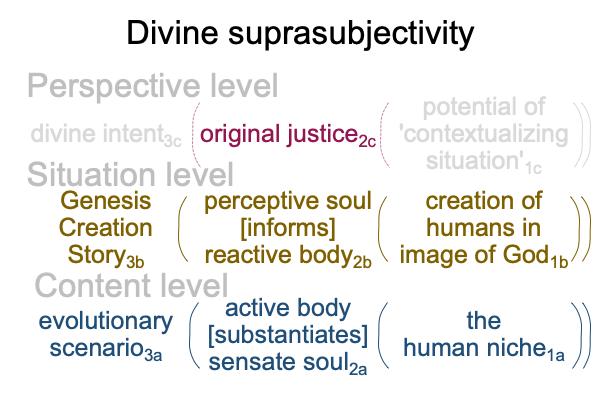
0066 The bare-bones image of the human, where phantasm2b virtually situates sensation2a, seems to arrive from two separate sources, one natural and one divine.
The natural source associates to the content level. The natural source is preternatural. It includes nature’s (as well as our own) significations. The natural source is immaterial, even though it entangles the material world. Our evolved nature is tuned to signs.
Our hominin ancestors talk in manual-brachial gestures, which image and indicate their referents. Word-gestures of hand talk picture and point to their referents. Our hand talk has the same iconic and indexal semiotic qualities as nature’s significations. Our hand talk joins nature’s significations. So, it is only sensible to imagine that nature’s signs are like manual-brachial word gestures. “Someone” sign-talks nature.
The divine source associates to the situation level. This is where God calls His creation, “good”. The Creation Story belongs to our current Lebenswelt. The people who live before the start of our current Lebenswelt do not know this story. They know their phantasms, built on an awareness that signs mean something to me. There is a certain grace that flows into us, allowing us to imagine that “someone” talks to us in the signs of nature.
0067 Sensations and feelings2a are both subjective and universal.
Phantasms2b are objective. They are judged according to their intelligibility.
Original justice2c brings these two into relation.
0068 Judgement has a triadic structure, consisting of three elements: relation, what is, and what ought to be.
Original justice2c names a judgment, where original justice (relation) brings the intelligibility of phantasms (what ought to be) into relation with the universality of sensations (what is).
Uh-oh, “original justice” also labels the relation.
Okay, to remove the redundancy, I will substitute the term, “holistic intellect”, into the slot for relation.
0069 Here is a picture.
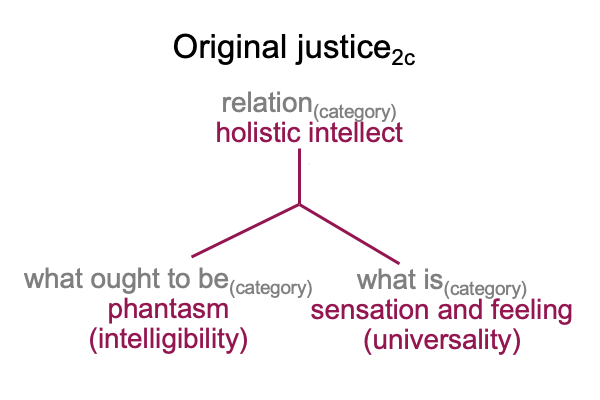
0070 In a contemplative judgment, each element is not imbued with a Peircean category.
In order for the contemplative judgment to become actionable, categories must be assigned. There are three elements. There are three categories. The assignment of two elements determines the third.
0071 To me, the holistic intellect (relation) goes with thirdness. Thirdness is the category for triadic relations.
This is not the only option. If the holistic intellect is fixed, unwavering, unbending and so forth, then original justice (relation) would be assigned to the category of secondness, the realm of actuality. If the holistic intellect (relation) is not fixed, and also vague, then it could be associated with firstness, the realm of possibility.
0072 An example of the latter is an “extra-credit” question that I put on the final exam in my most difficult courses: “For 10 points: Guess what I’m thinking.”
Of course, flummoxed students complain, but that is because they would rather not think in terms of judgment. Oh, they want justice, but they have no judgment.
Take a look at the question. “Guess” (relation) brings “what” (what is) into relation with “I’m thinking” (what ought to be). “Guess” is a relation that belongs to firstness, the realm of possibility, because it is indeterminate. That leaves the other two categories.
“What” (what is) is imbued either with thirdness (the realm of normal contexts, whose logic exhibits exclusion) or secondness (the realm of actuality, whose logic endorses the elimination of contradictions). Once “what” (what is) is assigned to either thirdness or secondness, then “I’m thinking” (what ought to be) gets the last remaining categorical assignment.
So, the question has two correct answers.
To which many students respond, “That question is evil.”
Evil is a privation of a good.

